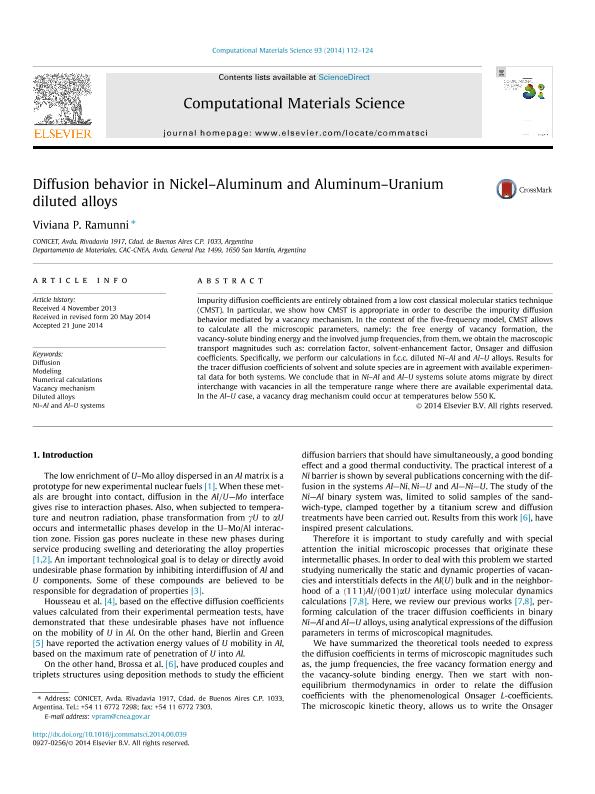Artículo
Diffusion behavior in Nickel–Aluminum and Aluminum-Uranium diluted alloys
Fecha de publicación:
07/2014
Editorial:
Elsevier Science
Revista:
Computational Materials Science
ISSN:
0927-0256
Idioma:
Inglés
Tipo de recurso:
Artículo publicado
Clasificación temática:
Resumen
Impurity diffusion coefficients are entirely obtained from a low cost classical molecular statics technique (CMST). In particular, we show how CMST is appropriate in order to describe the impurity diffusion behavior mediated by a vacancy mechanism. In the context of the five-frequency model, CMST allows to calculate all the microscopic parameters, namely: the free energy of vacancy formation, the vacancy-solute binding energy and the involved jump frequencies, from them, we obtain the macroscopic transport magnitudes such as: correlation factor, solvent-enhancement factor, Onsager and diffusion coefficients. Specifically, we perform our calculations in f.c.c. diluted Ni–Al and Al–U alloys. Results for the tracer diffusion coefficients of solvent and solute species are in agreement with available experimental data for both systems. We conclude that in Ni–Al and Al–U systems solute atoms migrate by direct interchange with vacancies in all the temperature range where there are available experimental data. In the Al–U case, a vacancy drag mechanism could occur at temperatures below 550 K.
Archivos asociados
Licencia
Identificadores
Colecciones
Articulos(SEDE CENTRAL)
Articulos de SEDE CENTRAL
Articulos de SEDE CENTRAL
Citación
Ramunni, Viviana Patricia; Diffusion behavior in Nickel–Aluminum and Aluminum-Uranium diluted alloys; Elsevier Science; Computational Materials Science; 93; 7-2014; 112-124
Compartir
Altmétricas




